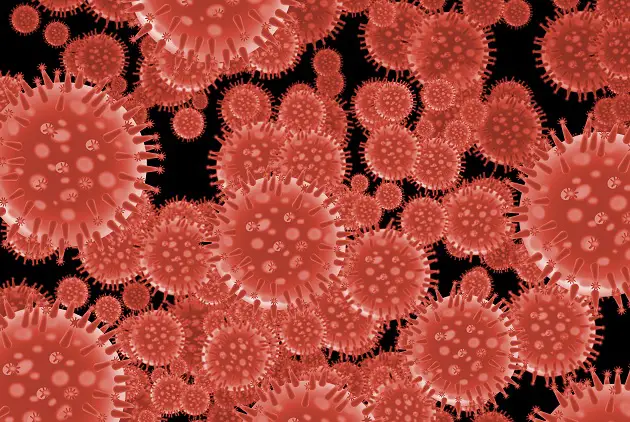Herpes zoster is a condition that is characterized by a blistering and painful skin rash that affects one area of the body, predominantly the lower abdomen and stomach, although it affects the face and back at times.
This disease is commonly referred to as shingles.
According to the Centers for Disease Control and Prevention, the U.S reports approximately one million new shingle cases every year.
In fact, there is a one in three chance that you might develop zoster in your lifetime.
Even though someone susceptible to herpes zoster typically reports only one episode during their life, there are individuals that report recurrent cases of shingles.
This disease is common among older folks and individuals with weak immune systems.
Shingles’ characteristic rash normally surfaces after a period of initially experiencing tingling, burning, stinging, or itching in the affected region.
A few days later, the rash will appear in a belt-like pattern (shingles is Latin for a belt) referred to as dermatome and will typically appear only one side of the affected body part.
Clusters of small red patches indicate the onset of the rash which eventually develops into blisters that bear a resemblance to chickenpox.
The blisters may then slowly open up, dry, and crust over eventually…
What Causes Herpes Zoster on Your Stomach?

According to Mayo Clinic, this disease is caused by the reactivation of the varicella-zoster virus (VZV).(1)
VCV is also responsible for causing chickenpox.
It belongs in the Herpesviridae family. Individuals that have had a chickenpox episode earlier on are the only ones who can contract shingles later on.
After resolving the chickenpox, the virus remains in a dormant state in certain nerve cells in the nervous system. As such, the individual cannot feel any effects from the varicella-zoster virus.
Nonetheless, for reasons that are still not clear, the VCV may reactivate in some individuals in later years and develop into shingles.(2)
The location of the zoster rash typically represents the location of the affected nerves.
Note that even though herpes zoster shares the same name as herpes simplex – the virus responsible for genital herpes, cold sores, and fever blisters -, they are not the same disease.
Risk Factors
According to a review article published by the New England Journal of Medicine zoster may occur to those who have been exposed to VCV previously.(3)
These are other risk factors that may develop shingles:
Age
Zoster rarely occurs in children but is more prevalent among elder adults.
This may be related to our decrease in immunity as we age. According to the National Foundation of Infectious Diseases, about 50% of all shingles cases are reported in individuals who are over 60 years of age.(4)
Weak Immunity
Having a weak immunity makes an individual susceptible to herpes zoster.
It is observed in patients ailing from HIV/AIDS or cancer. Additionally, persons that have autoimmune diseases or have undergone organ transplants are at a higher risk of contracting shingles.
Emotional and Psychological stress
Stress is believed to contribute to the development of herpes zoster. This is perhaps due to the effect it has on someone’s immune system and their overall health.
But, a 2014 study published by Clinical Infectious Diseases, „found no evidence that psychological stress triggers HZ“.(5)
The Contagious Period
The zoster causing virus, VCV, is typically transmitted through direct contact between individuals via the fluid from an active blistering rash.
As such, individuals susceptible to shingles should consciously avoid contact with people that have the disease.
This goes to pregnant women, particularly pregnant women that have never had a bout of chickenpox as well as individuals who are immune-compromised.
However, shingles cannot be transmitted through sneezing or coughing and are not contagious until the blisters surface. Also, once the blisters dry off and develop into crusts, the condition is considered not contagious.(6)
Regarding the transmission of VCV, it is important to note that a person that has never had chickenpox or never had the chickenpox vaccine may develop chickenpox when they come into contact with fluid from the zoster rash.(6)
Also, they will not develop shingles right away; it may materialize later on in life.
Additionally, if you’ve been exposed to VCV previously and have had chickenpox, you’ll not contract the virus when in contact with someone with shingles.
Signs and Symptoms
The condition begins with a stinging, itching, or burning sensation in the area where the rash develops eventually.
At times, this pain can be severe with some people complaining of the skin becoming extremely sensitive in that region. The discomfort precedes the rash by a few days.
Other symptoms may include:
- Fever and chills
- Headaches
- Malaise
- Body aches
- Swollen lymph glands
- Nausea
The characteristic shingles rash will appear within days of experiencing the skin discomfort. It usually starts as clusters of red patches that develop into small blisters.
Eventually, the fluid-filled blisters will burst open then start drying up slowly and ultimately scab over.
These crusts may fall off within a few weeks with the rash clearing up completely within four weeks.
The site of the zoster rush varies between individuals. Also, it commonly affects the stomach region as well as the back and face.
The ribcage and waist areas are the most commonly affected.
How is Herpes Zoster on Abdomen Diagnosed?
The doctor will diagnose the shingles rash based on its distinctive appearance and distribution on the lower abdomen and stomach.
A blistering and painful rash that is centralized to one area is highly indicative of shingles. But, diagnosing herpes zoster before the rash appears is difficult.
In the event of an unclear diagnosis, lab tests are used to verify the diagnosis.
Also, skin lesion samples can be used to detect the varicella-zoster virus.
Treatment

The herpes zoster treatment revolves around reducing the effects of the virus as well as managing the pain.
Several types of medication are used for this purpose. Individuals with severe symptoms or have an impaired immune system require hospital admission.
Antiviral drugs are the first line of defense against VCV.
These medicines shorten the period of sickness, decrease its severity, and speed up the skin lesions’ healing. They also prevent complications associated with shingles from developing.
These drugs are most effective within 72 hours of the rash’s fast appearance. Some of these medications include;
- famciclovir
- valacyclovir
- and acyclovir
The discomfort from the rash can be mitigated by pain medication.
For shingles that are accompanied by mild pain, over the counter analgesics such as Tylenol or ibuprofen can do the job. Severe pain, however, might require opioid pain medicine.
To deal with the localized itching, over the counter antihistamine drugs such as Benadryl can be used.
Corticosteroids medications are typically used in complicated zosters that involve the eye or ears.
Home Treatment
You may get relief from the skin rash by applying calamine lotion on the affected area to reduce itching. A cool and wet compress using aluminum acetate solution can offer a soothing sensation against the rash.
Additionally, a colloidal oatmeal bath can also offer some relief from itching.
You should also maintain good hygiene while avoiding scratching the rash.
Keep the affected area clean to avoid potential bacterial infection. You also need to cover the rash to reduce chances of transmitting it to a susceptible individual.
Is There a Vaccine?
The FDA approved Shingrix as a non-live vaccine to prevent herpes zoster as of October 2017.
This vaccine is recommended for healthy individuals over 50 years of age. According to the CDC, an individual may receive Shingrix regardless of whether they have had chickenpox or not.
What About Recurrent Cases?
Even though the majority of individuals typically experience a single episode of shingles in their lifetimes, recurrence does occur in some people.
To avoid this recurrence, receiving the Shingrix – the zoster vaccine – may assist in preventing shingles from resurfacing.
Individuals that have suffered from recurrent bouts of shingles need to visit their doctors as soon as the rash appears and get antiviral medicine.
What is the Outlook?
Generally, the herpes zoster condition should resolve within two to four weeks of the appearance of the initial symptom for most people.
The outlook is good for healthy and young individuals who do not develop complications from shingles.
However, this cannot be guaranteed for older people or those that have immune disorders as these are the groups that are most likely to develop a complication from a shingles outbreak.
Only up to 4% of folks who contract herpes zoster will require being hospitalized and about 30% of these usually have immune disorders.
Unfortunately, the CDC reports that about 96 deaths result from complications arising from VCV every year in the US. Majority of these deaths are individuals that are immune-compromised.
Your first step should always be to see your doctor as soon as possible!
Resources
(1)https://www.mayoclinic.org/diseases-conditions/shingles/symptoms-causes/syc-20353054
(2) Illustrated Dictionary of Immunology, Second Edition, Julius M. Cruse, Robert E. Lewis
(3)https://www.nejm.org/doi/full/10.1056/NEJM200003023420906
(4)http://www.adultvaccination.org/vpd/shingles/facts.html
(5)https://academic.oup.com/cid/article/60/5/781/290708
(6)https://www.cdc.gov/shingles/about/transmission.html
Leave Feedback: Was this article helpful?

